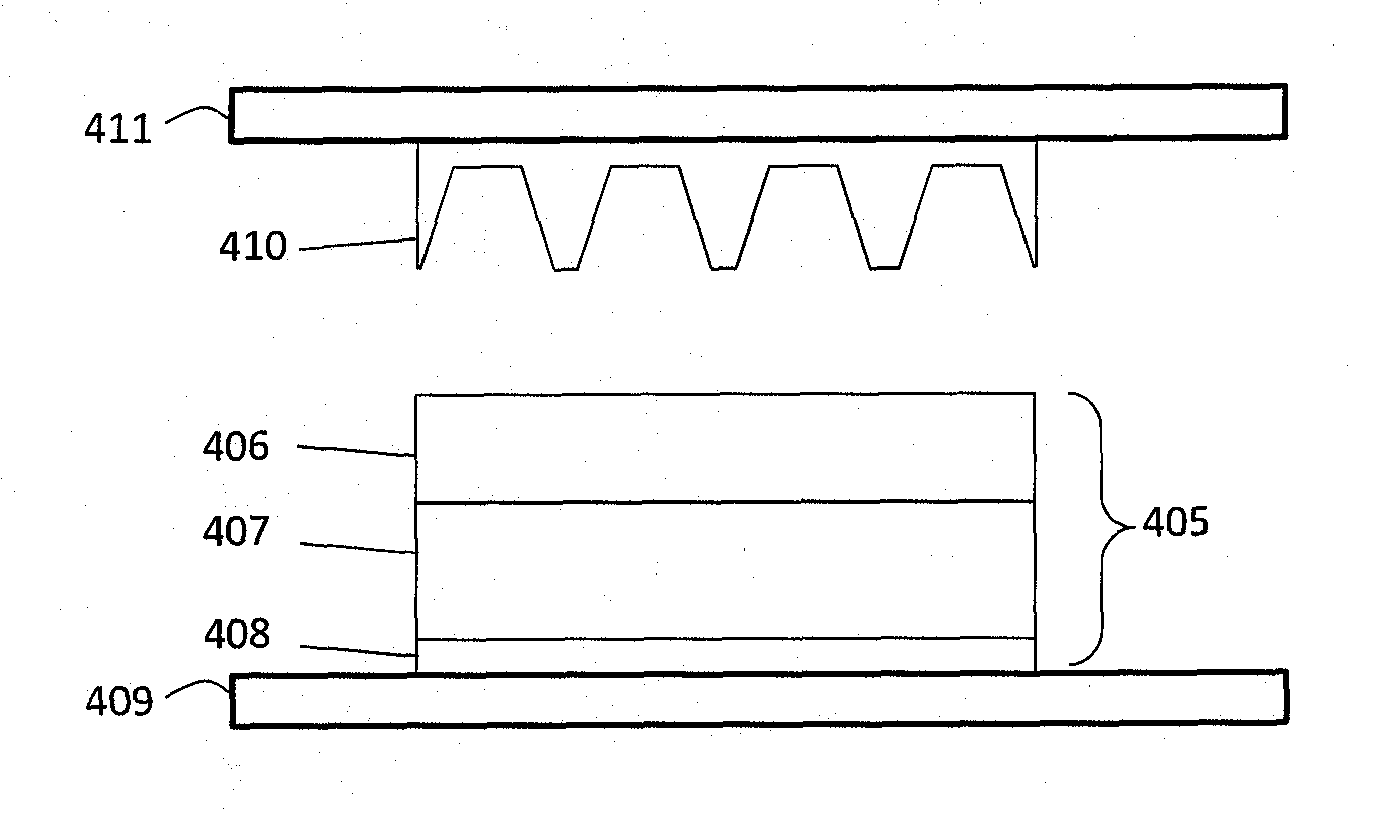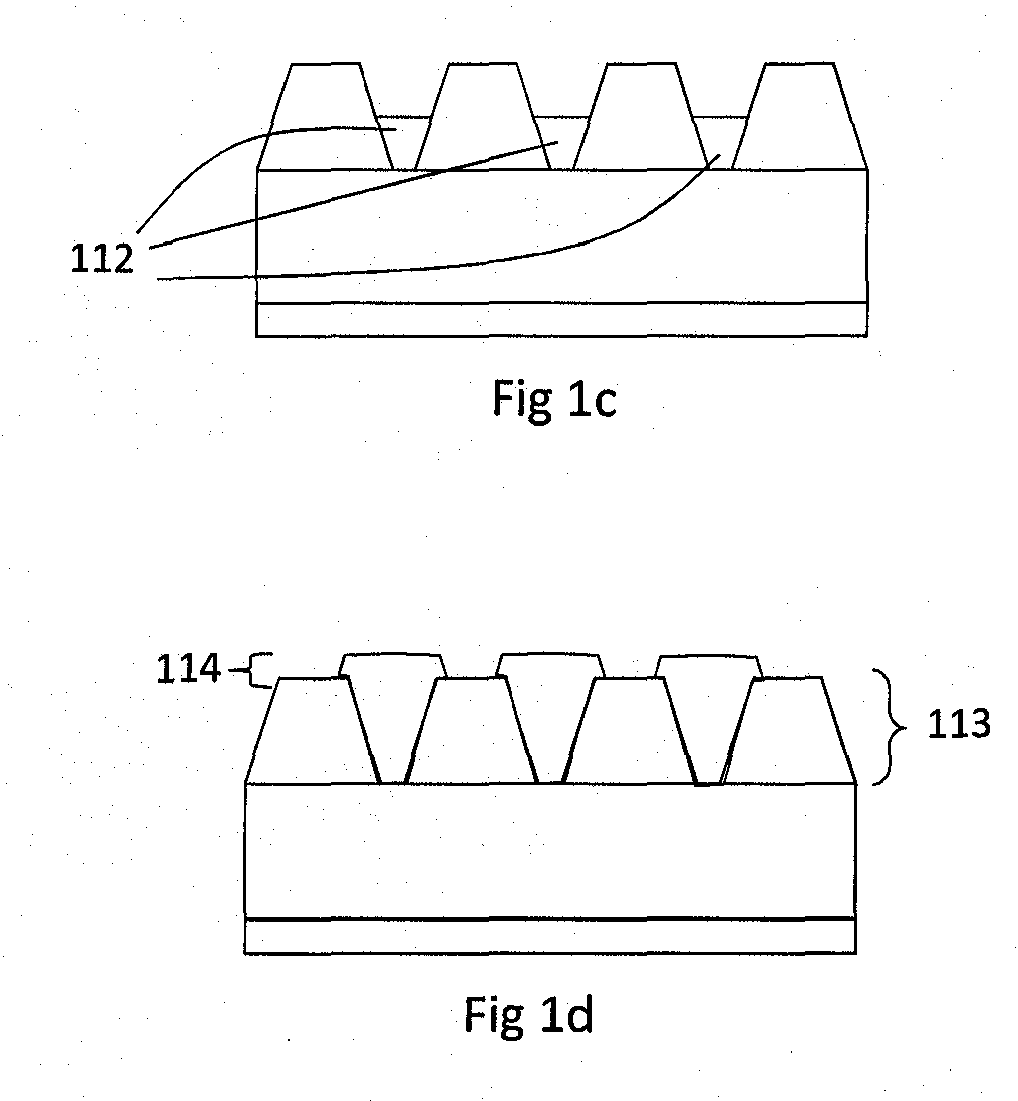Template Process for Small Pitch Flip-Flop Interconnect Hybridization
a flip-chip interconnect and template technology, applied in the field of template process for small pitch flip-chip interconnect hybridization, can solve the problems of increasing the difficulty of hybridizing two chips with a high yield of successful bonds, other components are not monolithically fabricated on the same chip, and the pitch of flip-chip interconnects has gotten smaller. , to achieve the effect of eliminating non-uniform bump shape and siz
- Summary
- Abstract
- Description
- Claims
- Application Information
AI Technical Summary
Benefits of technology
Problems solved by technology
Method used
Image
Examples
second exemplary embodiment
Alternate Teflon™ Deposition Techniques
[0045]Another exemplary embodiment follows FIGS. 2a-e. The following steps occur in the same manner as the initial exemplary embodiment: degreasing and oxide etching dip of the Si wafer, about 500 nanometer to 1 micron topside Ni deposition and 200 nanometer Al deposition, and backside about 500 nanometer to 1 micron Ni deposition and 200 nanometer Al deposition. This exemplary embodiment uses a different set of techniques to deposit the topside nonconductive layer 207 and backside nonconductive layer 208 of FIG. 2b. Instead of using spin-on Teflon™ AF 1601-S to deposit these layers, PTFE can be deposited in a vacuum chamber onto the conductive layer of the transfer wafer 206 shown in FIG. 2a. One can use either RF sputtering deposition or atomic layer deposition (ALD) to perform deposition of PTFE. The thickness of the deposition of the topside nonconductive layer can be chosen to be roughly 1 to 2 microns less than the desired final height of...
third exemplary embodiment
Etching Notches
[0047]Yet another exemplary embodiment follows FIG. 2a. The following steps occur in the same manner as the initial exemplary embodiment: degreasing and oxide etching dip of the Si wafer, about 500 nanometer to 1 micron topside Ni deposition and 200 nanometer Al deposition, backside about 500 nanometer to 1 micron Ni deposition and 200 nanometer Al deposition, deposition of the topside nonconductive layer by either of the techniques described in the previous exemplary embodiments, and deposition of the backside nonconductive layer by either of the techniques described in the previous exemplary embodiments.
[0048]FIG. 3a shows how fabrication proceeds for this exemplary embodiment. Just as in the initial exemplary embodiment, a 200 nanometer Al etch mask 303 is deposited on the nonconductive layer 301 by the same techniques. After the Al deposition, a standard photolithography step is performed to define features in the photoresist layer 304. These features, unlike the ...
fourth exemplary embodiment
Imprint Fabrication
[0052]Yet, another exemplary embodiment follows FIG. 2a. The following steps occur in the same manner as the initial embodiment: degreasing and oxide etching dip of the Si wafer, about 500 nanometer to 1 micron topside Ni deposition and 200 nanometer Al deposition, backside about 500 nanometer to 1 micron Ni deposition and 200 nanometer Al deposition, deposition of the topside nonconductive layer by either of the techniques described in the previous embodiments, and deposition of the backside nonconductive layer by either of the techniques described in the previous embodiments.
[0053]This exemplary embodiment differs from previous ones in the way that the features on the topside nonconductive layer are defined. Rather than using an etch mask followed by etching, this exemplary embodiment involves imprinting the topside nonconductive layer with features defined on another wafer, to be called the imprinting wafer. The result is that the features on the nonconductive ...
PUM
 Login to View More
Login to View More Abstract
Description
Claims
Application Information
 Login to View More
Login to View More - R&D
- Intellectual Property
- Life Sciences
- Materials
- Tech Scout
- Unparalleled Data Quality
- Higher Quality Content
- 60% Fewer Hallucinations
Browse by: Latest US Patents, China's latest patents, Technical Efficacy Thesaurus, Application Domain, Technology Topic, Popular Technical Reports.
© 2025 PatSnap. All rights reserved.Legal|Privacy policy|Modern Slavery Act Transparency Statement|Sitemap|About US| Contact US: help@patsnap.com



